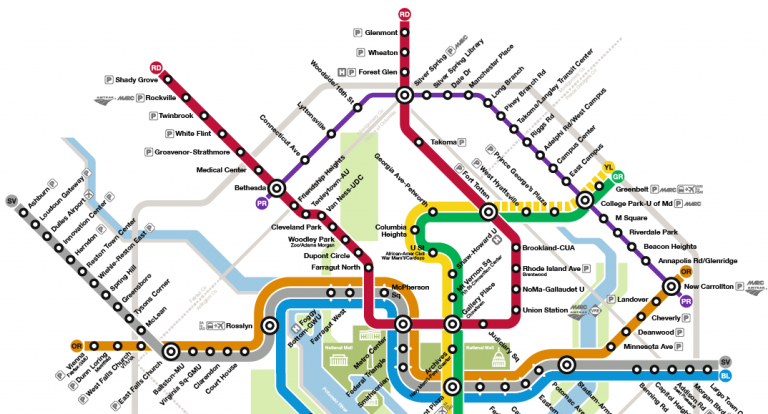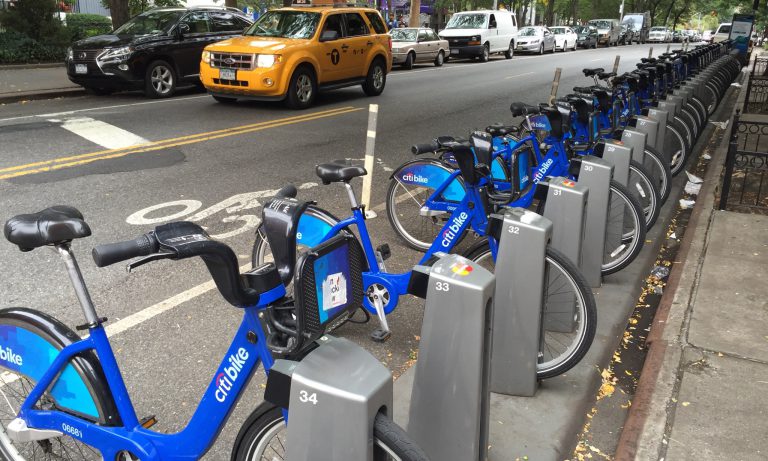What’s Involved in Upgrading a Century-old Subway Signal System?
Transit systems like PATH and the New York City Subway need ongoing maintenance to maintain frequent and reliable service. Since both operate 24/7, work is often squeezed in during nights and weekends when passenger demand is lighter. But sometimes larger work periods are needed for major projects like the complete overhaul of a century-old signal system, deep cleaning and repair of tunnels damaged by Superstorm Sandy, and construction of new stations, like the World Trade Center Transportation Hub built to replace the one lost on September 11, 2001.
Over the past several years, PATH service has been suspended in segments of the subway system connecting NY & NJ on weekends to give crews the longer time blocks necessary to make major repairs and upgrades. In 2014 and 2015, service between Exchange Place in Jersey City and the World Trade Center in Lower Manhattan was suspended on some weekends from 11PM Friday-5AM Monday, and in 2016 Hoboken-33rd Street service was suspended for 17 weekends between August and December.
During these service suspensions, crews have installed the equipment necessary for a brand new, federally mandated Positive Train Control (PTC) signal system that will increase safety and permit trains to run more frequently by safely allowing them to run closer together.
In conjunction with installation of the new signal system, the work periods are being used to repair infrastructure in the Downtown Hudson Tubes damaged by Hurricane Sandy. In a 2014 report, PATH explained the effects of Superstorm Sandy, and the work underway to mitigate the damage:
Sandy’s floodwaters left behind an insidious salt residue that rusts metal cables, equipment and the shell of the tunnel itself. The corrosive salt required a painstaking, labor-intensive cleaning process, beyond what occurred in the initial aftermath of the storm to return train service as quickly as possible. Floodwaters in Sandy’s aftermath destroyed much of the substantial prior work PATH had completed on the PTC system, requiring replacement of those components and significantly setting back the agency’s schedule and budget. The Federal Transit Administration helped the Port Authority recoup those financial losses.
PATH announced the 2016 service changes to give riders two months’ notice, a notable improvement over the announcement of 2014 closures, which was criticized for giving riders only about a week’s notice. In our regular meetings with PATH, the PATH Riders Council discussed the importance of a longer advance notice period for future service changes, and the earlier advance notice was a good outcome of that collaboration.
During the 2016 suspension of service to Midtown, PATH operated normal Newark-WTC service, as well as direct service between Hoboken and World Trade Center on the weekends. This provided subway service at all New Jersey stations, as well as connections to 11 New York City Subway lines within two blocks of the World Trade Center Transportation Hub.
PATH also operated a limited shuttle bus service between the World Trade Center Transportation Hub and West 29th Street along Sixth and Seventh Avenues. PATH offered the shuttle bus service to give PATH riders an option to travel within the PATH service area without paying an additional fare. This is commendable, but Yonah Freemark of The Transport Politic asked why the Port Authority and Metropolitan Transportation Authority didn’t collaborate to offer a free transfer to the adjacent New York City Subway lines during the PATH service suspensions:
It is possible that the Port Authority asked the MTA to provide free transfer rides to its PATH riders arriving at the World Trade Center, and the MTA declined the idea. Or perhaps the Port Authority determined that providing riders vouchers for rides on the MTA would be more expensive than operating the relatively minimal-cost substitute bus.
Nevertheless, it would be cheaper for both transit systems overall for the MTA to simply absorb the transferring PATH riders during the weekend shutdowns. This would require no additional operating costs on the part of the Port Authority and likely nothing for the Subway system either, as it has the capacity to absorb these weekend passengers.
Instead of blaming the agencies, Freemark notes, “their economic and political makeup often obligates them to act as they do”. Freemark is right: the agencies themselves are working to provide transit within the political and financial constraints placed on them, and we need to change the political climate to improve cooperation and get more people using transit.
A better grasp on what regional goals are for transit networks in general, and a commensurate focus by elected officials on telling agencies what to do, rather than letting agencies operate in isolated fiefdoms, would aid American transit riders. In places with multiple transit agencies, it probably shouldn’t be up to individual operators to determine which services to prioritize, or what fares to charge, or where to expand, or how to deal with a major service change due to construction.
To improve American transit, we can learn from successful models elsewhere. In German cities, for example, responsibility for operating transit lines rests with operators, while management of fares, service information, and payment is handled by a Verkehrsverbund, or transport association, that is directly accountable to city and regional governments. Berlin, for example, has multiple transit operators, but it manages to have a unified map, fare structure, and payment system managed by Verkehrsverbund Berlin-Brandenburg (VBB). Berlin, Brandenburg, and the eighteen cities and counties in the state of Brandenburg all jointly own VBB, thus ensuring that it serves the region’s needs in an integrated manner. This approach appears especially relevant to the New York & New Jersey bi-state urban region.
PATH officials estimate the new signal system will enable up to a 20% increase in service, which will help PATH accommodate growing demand. Although disruptions can be inconvenient, the work underway is essential to the performance, capacity, and resilience of the transit systems that power the urban economy.
Diagram of PATH routes designed by Beyer Blinder Belle Architects.




